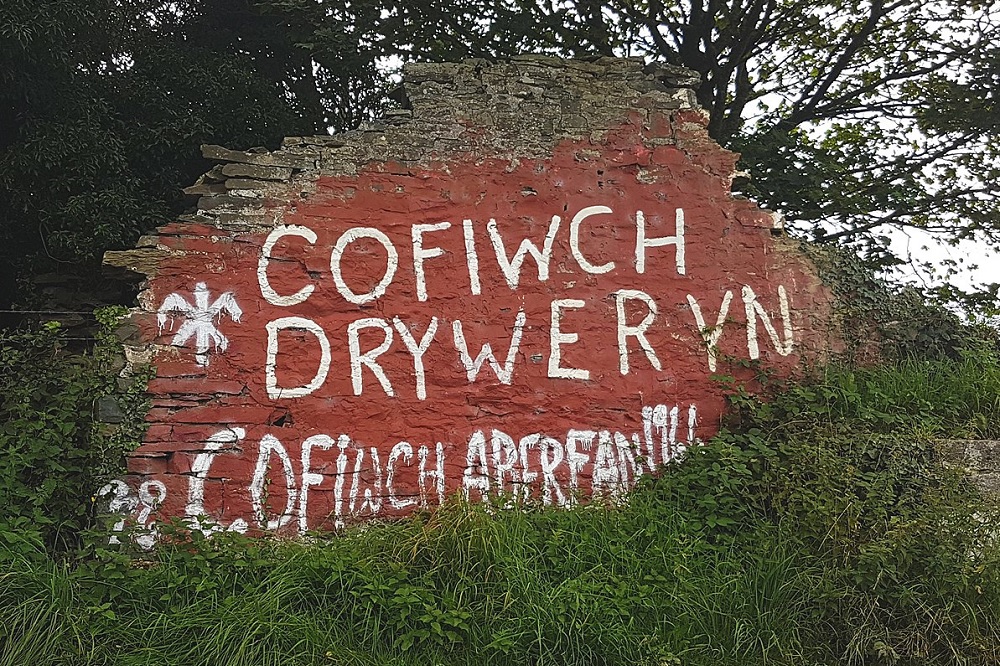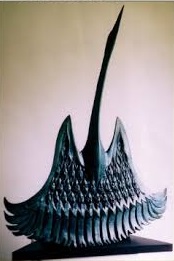Why it’s time for a permanent Tryweryn memorial

Ifan Morgan Jones
The ‘Cofiwch Dryweryn’ (Remember Tryweryn) wall has been defaced – with the word ‘Elvis’.
There is probably some symbolism here regarding Anglo-American culture subsuming the Welsh, as well as a lack of knowledge and respect for Welsh history.
But this isn’t the first time the wall has been vandalised and it won’t be the last. The wall has had to be repainted a number of times since Meic Stephens first did so in the early 60s.
In fact, the ephemerality of the painted slogan is sort of the point. Every few years it needs to be painted anew, thereby emphasising that we do really remember Tryweryn.
The weather, car fumes and vandalism which chip away at the wall’s veneer every year just allow us to make the point repeatedly that the drowning of Capel Celyn does matter, and we won’t let it go.
The slogan itself is, of course, a reference to the Welsh community near Bala that was flooded to provide water for Liverpool.
It’s not just a plea to remember Tryweryn but to work to never let it happen again, by ensuring that the will of the people of Wales cannot simply be overruled by Westminster.
But it represents even more than that. The crude slogan hurriedly painted on a wall under cover of darkness is also a memorial to the first stirrings of a renewal of a desire for Welsh self-determination in the 60s which gave us the proto-nation state that we have today.
There is also the symbolism of the rural cottage ruin on which the slogan has been painted, which serves as a reminder of the slow decay of Welsh language communities in this part of the world.
Which brings us to a much bigger problem with the monument than a bit of transitory vandalism – the wall itself is falling down.
Anyone who has seen pictures of the wall over recent decades will have noticed that the canvas the midnight artists must work with is slowly but surely becoming smaller.
It is a ruin after all, and ruins do have a habit of continuing to fall down.
A decade ago, around the 45th anniversary of the painting, a bid was launched to preserve the wall, but this doesn’t seem to have gone anywhere. As it stands, it seems unlikely to last another fifty years.
 20 years ago one of Wales’ most prominent artists, John Meirion Morris, designed a permanent memorial to Tryweryn.
20 years ago one of Wales’ most prominent artists, John Meirion Morris, designed a permanent memorial to Tryweryn.
It is a stunning work of art that captures not just the horror of what happened but also how it inspired amongst the people of Wales a determination never to let it happen again.
When the bid to build the full-sized statue was launched in 1999, Wales was just finding its feet as a devolved country and such a statue was perhaps too far outside the political mainstream to garner much public support.
Have things changed in the meantime? Although much maligned, the BBC’s recent public vote to select the first statue of a woman to be built in Wales shows that, 20 years after devolution, we have begun to unashamedly celebrate and promote our own history.
We will, of course, continue to paint Cofiwch Dryweryn as long as the wall remains standing.
But a Tryweryn monument would demonstrate the progress we have made since the 60s. A desire for Welsh self-determination is no longer something that must be daubed anonymously on a wall under cover of darkness.
This dark chapter in Welsh history is something that has permanently lodged itself in the nation’s consciousness. It is now generally accepted that the drowning of Capel Celyn was wrong and that the people of Wales should have the right to take political control of their own land and language.
A permanent, public memorial, would, therefore, be entirely appropriate. It would also just happen to be one of the best examples of public art in all of Wales.
Support Nation.Cymru’s work? We’re looking for just 600 people to donate £2 a month to sponsor investigative journalism in Wales. Donate now!
Support our Nation today
For the price of a cup of coffee a month you can help us create an independent, not-for-profit, national news service for the people of Wales, by the people of Wales.




